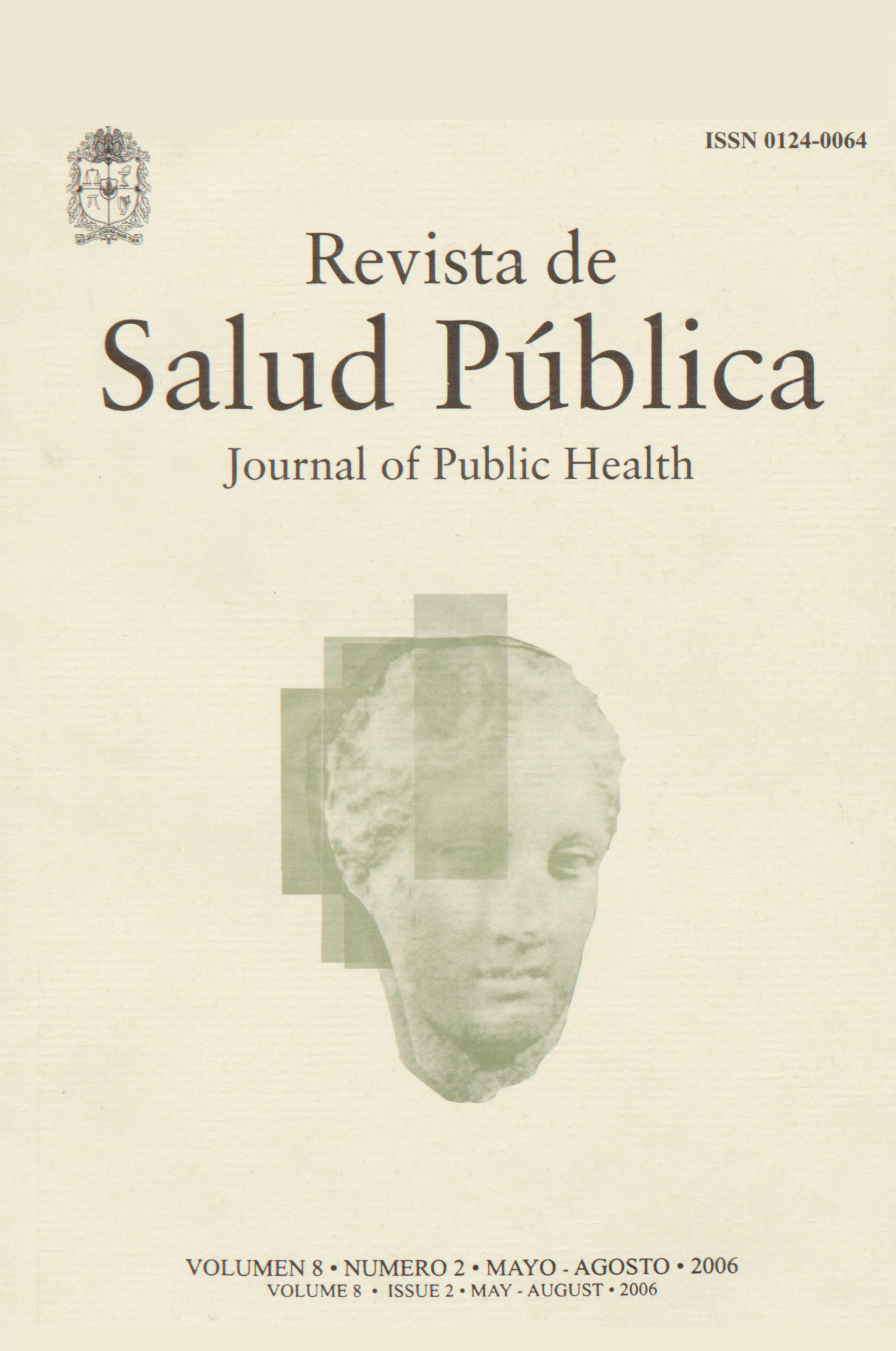Reacciones adversas a medicamentos en el Hospital de Suba de Bogotá
Adverse drug reactions in a Suba hospital of Bogotá
Keywords:
Farmacoepidemiología, utilización de medicamentos, Colombia (es)Pharmacoepidemiology, drug utilization, Colombia (en)
Downloads
OBJETIVOS: Identificar, documentar y analizar las sospechas de reacciones adversas que son reportadas al programa de fármacovigilancia del Hospital de Suba, de segundo nivel de complejidad.
METODOLOGÍA: Estudio observacional descriptivo. Se realizó un seguimiento a todos los pacientes que acudieron a los servicios de Urgencias y Consulta Externa, en el Hospital de Suba segundo nivel de la ciudad de Bogotá por un periodo de tres meses.
RESULTADOS: Se recibieron 46 reportes de sospecha de reacciones adversas a medicamentos (RAM) de los cuales 26 (56,6 %) correspondieron a motivo de consulta, los 20 restantes se produjeron intrahospitalariamente. El sistema gastrointestinal presentó el mayor porcentaje de reportes (30,4 %), seguido del cardiovascular (17,4 %), sistema nervioso central (13 %) y la piel (13 %), Los Grupos farmacológicos sospechosos fueron los antipsicóticos (30,4 %), suplementos nutricionales (17,4 %), y antiinfecciosos (10,9 %). La incidencia de RAM como motivo de consulta fue de 3 RAM/10 000 consultas/mes.
CONCLUSIONES: Se identificaron las gestantes, niños, adolescentes y adultos jóvenes como principales grupos de riesgo para presentar RAM. Un bajo porcentaje fue clasificado como serias y al menos la mitad se estableció que su causalidad era posible de acuerdo al algoritmo de la Organización Mundial de la Salud (OMS).
OBJECTIVE: This study was carried out in order to identify, document and assess suspect of Adverse Drug Reactions (ADR) that are report to pharmacovigilance program of Suba Hospital.
METHODOLOGY: It was carried out an observational, descriptive and longitudinal study, in all the patients that consulted to the services of Urgencies and External Consultation, in the Hospital of Suba of the Bogotá city.
RESULTS: During the period of study 46 reports of suspicion of ADR were received, from those which 26 (56,6 %) corresponded to consultation reason, the 20 remaining it was indoor patient . In the classification for Organ-System, the gastrointestinal system presents the highest percentage of reports (30,4 %), followed by the cardiovascular (17,4 %), nervous central system (13 %), Skin (13 %), Obstetric (10,9 %), renal system (4,3 %). The therapeutic Groups with more reported percentages of suspicion of ADR were Antipsychotic (30,4 %), Nutritional Supplements (17,4 %), Anti-infective (10,9 %), the other pharmacological groups present similar or inferior percentages to those mentioned previously. The incidence of ADR as consultation reason was 3 ADR consultation reason/10 000 consultations / month.
CONCLUSIONS: It was identify to pregnant, children and young people as a risk group to development an ADR. A low proportion it was clasificated as a serious and less than half as a possible according World Health Organization algoritm.
References
Schneeweiss S, Göttler M, Hasford J, Swoboda W, Hippius M, Hoffmann A, Et al. First results from intensified monitoring system to estimate drug related hospital admissions. Blackwell Science Ltd Br J Clin Pharmacol. 2001; 52:196-200.
World Health Organization. SIGNAL, Analyses of Adverse Reaction Reports in the WHO Database. Marzo 2003.
Segura O, Maldonado C E. Las reacciones adversas a medicamentos: una aproximación desde el punto de vista económico. Biomédica 2003; 23:401-7.
Tribiño G, Maldonado C, Segura O, Díaz J. Costos directos y aspectos clínicos de las reacciones adversas a medicamentos en pacientes hospitalizados en el servicio de medicina interna de una institución de tercer nivel de Bogotá. Biomédica 2006; 26:31-41.
Asociación Colombiana para el avance de la Investigación Clínica, Avanzar. Manual de Fármacovigilancia. Bogotá, Colombia; 2002.
Consenso de Granada sobre Problemas Relacionados con Medicamentos. Pharm Care. España. 1999; 1:107-112.
Garzón S, Maiquez V, Gutiérrez R, Rubio V, Gómez T, Calvo M, Campo R, Et al. Carbamazepina como posible causa de Diátesis Hemorrágica. Farmacia Hospitalaria; 1998; 22(6):313-315.
Calvo J, García F, Hernández J, Duarte J, Fisac P. Calmuntia Asencio M J. Anemia Aplasica y Carbamazepina. Descripción de un caso. Farmacia Hospitalaria 1998; 22(1): 46-48.
San Miguel M, Vila M, Díaz M, Azorín M, Fernández V, Robles S, Incidencia de efectos extrapiramidales en pacientes con Esquizofrenia tratados con Haloperidol solo o asociado a Biperideno. Farmacia Hospitalaria 1995; 19(4): 225-228.
Franceschi A, Tuccori M, Bocci G, Vannozzi F, Di Paolo A, Bárbara C, et al, Drug Therapeutic Failures in Emergency Departament Patiens. A University hospital experience. Pharmacological Research. 2004; 49:85-91.
Hartigan-Go KY, Wong JQ, Inclusion of therapeutic failures in adverse drug reactions. In: Aronson J, editor. Side effects of drugs. Annual 23. A worldwide yearly survey of new data and trends in adverse drug reaction. Amsterdam: Elsevier; 2000. pp. 27-33.
Gurwitz J, Field T, Harrold L, Rothschild J, Debellis K, Seger A, et al. Incidence and Preventability of Adverse Drug Events Among Older Persons in the Ambulatory Setting. American Medical Association. JAMA; 2003; 289(9): 1107 - 1116.
How to Cite
APA
ACM
ACS
ABNT
Chicago
Harvard
IEEE
MLA
Turabian
Vancouver
Download Citation
Article abstract page views
Downloads
License

This work is licensed under a Creative Commons Attribution 4.0 International License.
This journal provides immediate free access to its content under the principle that making research available to the public free of charge supports a greater exchange of global knowledge.
All contents of this journal, except where identified, are published under a Creative Commons Attribution 4.0 License




















